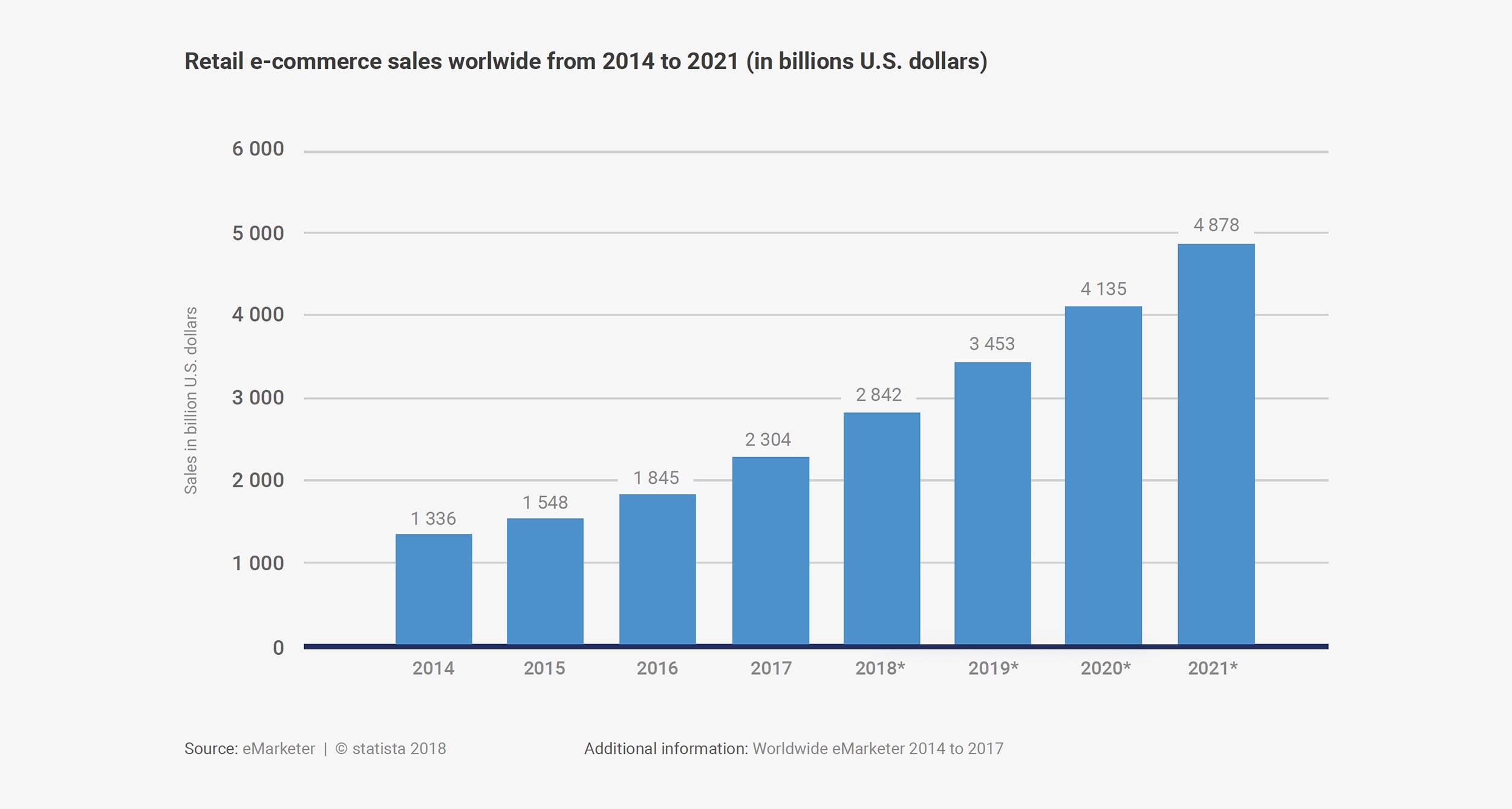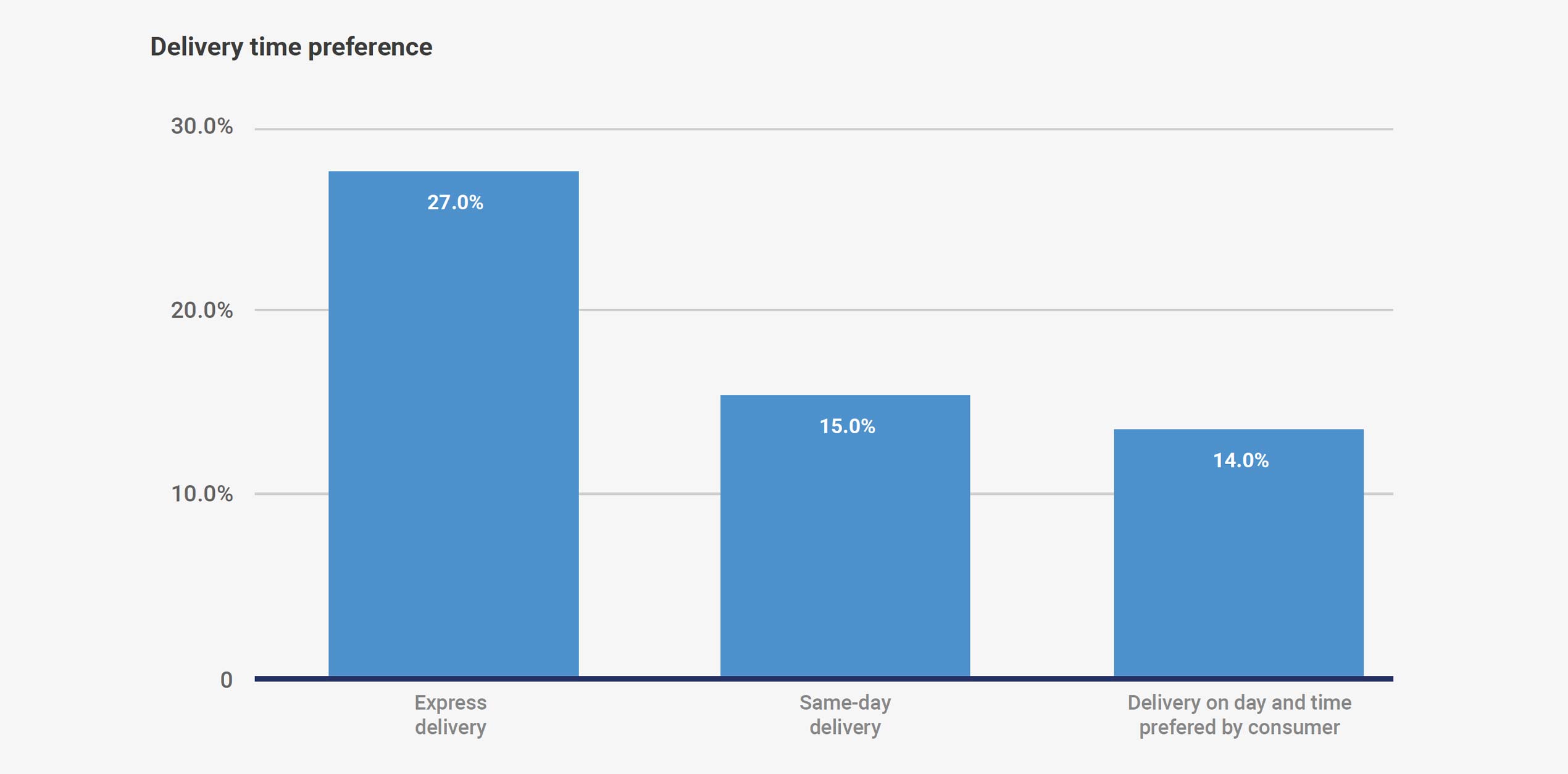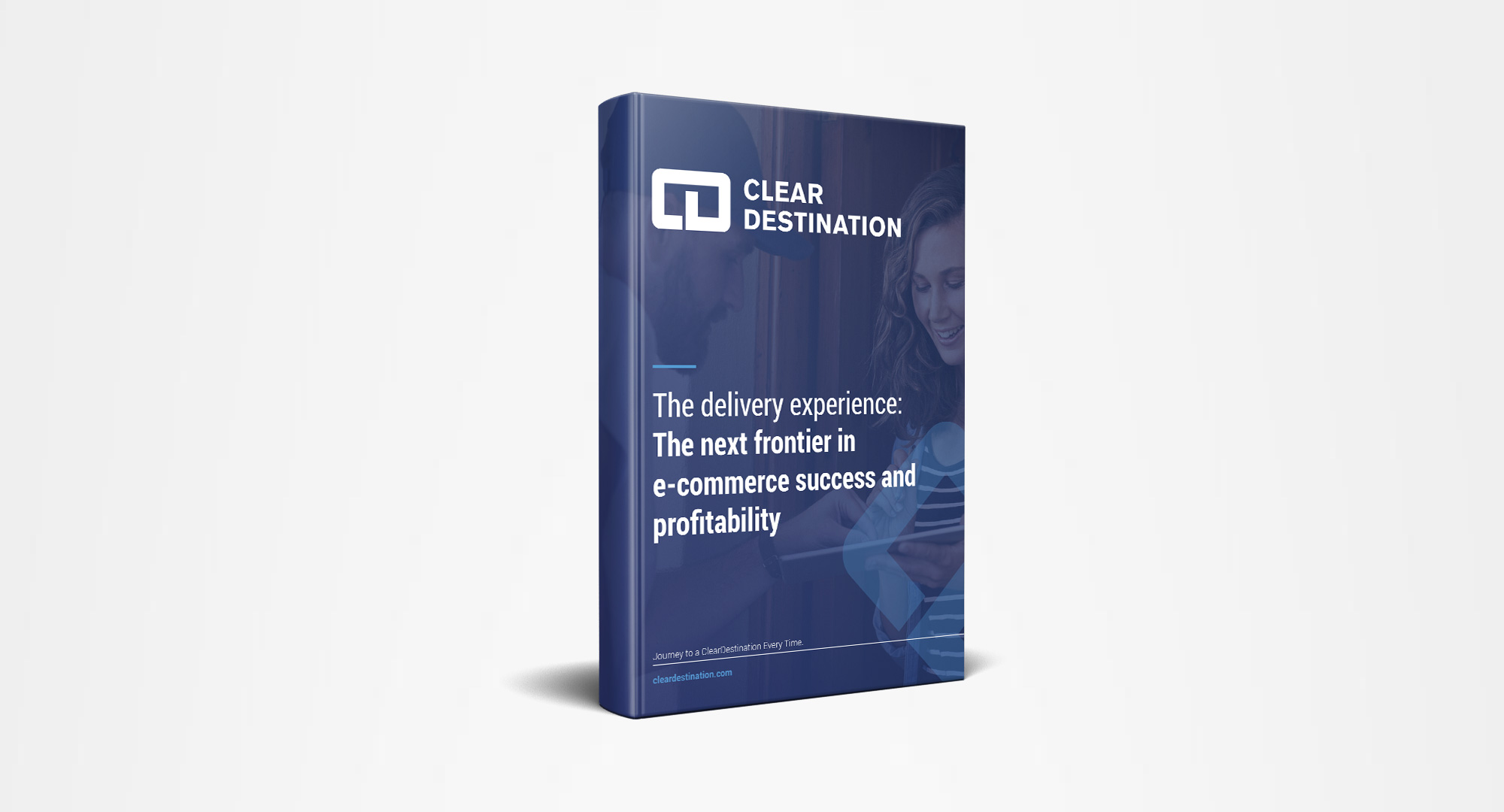What do customers really want out of their e-commerce delivery experience?
Next-generation e-commerce consumers have varying e-commerce delivery needs.
Next-generation e-commerce consumers have varying e-commerce delivery needs depending upon their age, socio-demographics, culture, income, lifestyles, e-commerce purchasing history and experience, the type of product they are buying, and the perceived level of immediacy (“I need it now!”).
Let’s take a look at some of the most prevalent consumer needs with respect to e-commerce deliveries, apart from the aforementioned free deliveries.
Speed of delivery: Not surprisingly, consumers want their e-commerce purchases—and they want them STAT. According to a 2018 UPS report, entitled UPS Pulse of the Online Shopper Study, 45% of US and 39% of Canadian consumers expect that orders placed between 1 p.m. and 4 p.m. are eligible for express or next-day delivery.

RetailWire even found that, during a comprehensive consumer poll, the maximum number of days customers are willing to wait for an item to be delivered in exchange for free shipping decreased from 5.5 days in 2012 to 4.1 in 2018. This finding has most likely been exacerbated by the unmatched performance of Amazon Prime, which has raised the bar significantly on fast delivery. Flexibility and convenience: While free shipping may seem to be the holy grail of an e-commerce delivery experience strategy, it is important to remember that many consumers nevertheless want flexible shipping options. RetailTouchpoints indicates that 88% of customers are willing to pay for same-day delivery.
Still others are not looking for free delivery per se; rather, they want a variety of options to choose from, regardless of their location or type of product. In UPS’ study, 2 out of 3 consumers have used “buy online, pick-up in store” programs to avoid shipping fees and maximize speed. In a nutshell, tailor deliveries to customers’ preferences and lifestyle— not the other way around.
Another important factor? Letting customers choose their delivery date and time windows.

End-to-end visibility: Nothing frustrates consumers more than a lack of information—and real-time visibility—into where their order is actually landed in the logistics chain. If expectations haven’t been set clearly from the start as to timelines or if delivery dates are not respected, customer dissatisfaction is likely to occur. This can cause a snowball effect in terms of repeated customer service calls, cancelled orders, and competitors waiting for these jaded consumers with open arms. With today’s technologies, there is simply no excuse for e-commerce businesses not to offer customers end-to-end visibility into their shipments. However, due to the complexities of logistics networks, which are often comprised of multiple first-, mid- and last-mile partners with discrepant backend solutions and siloed workflows, achieving seamless logistics collaboration can be difficult at best.
Transparency: Visibility also means not just talking the talk—but walking the walk. In a RetailerTouchpoints poll, transparency is a major sell point for hard-earned consumers. Did you know that 63% of online shoppers indicate that knowing the estimated or guaranteed delivery date is important? On top of end-to-end visibility, customers also prefer that manufacturers and retailers remain upfront with any delivery issues; in other words, if a delivery is set to be late, let customers know as soon as possible. In an era of e-commerce, the element of negative surprise and a lack of proactivity is far from ideal.
Accuracy: First-time-right deliveries may appear to be no-brainers for impatient online shoppers, but that does not mean that manufacturers, retailers or their carrier partners are immune to errors in terms of inaccurate orders, which may mean missing items, surpluses or altogether unwanted products that somehow found their way into a customer’s shipment. Inaccurate deliveries are a hassle for customers, particularly in the case of product returns, and a profit-gouging problem for manufacturers and retailers, which have to manage the reverse logistics.

This ebook, The delivery experience: The next frontier in e-commerce success and profitability, provides great insight into the ever-changing e-commerce landscape. Download this ebook to uncover what the delivery experience actually entails and best practices into delivering this experience to your unique clientele.
